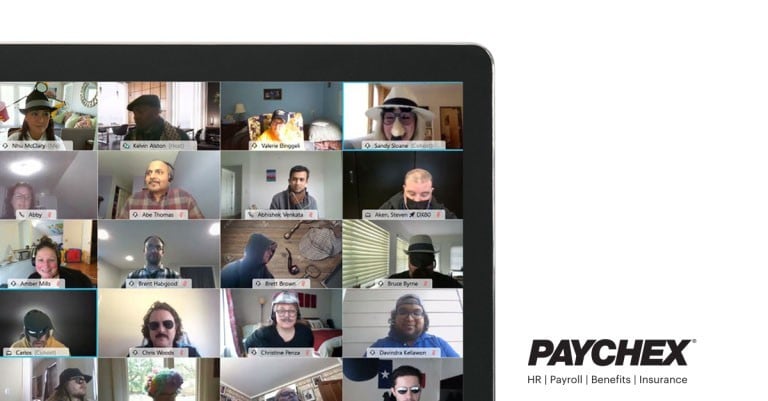El papel fundamental que desempeñan los equipos de TI para garantizar la continuidad del negocio

The last 16 months have been unlike any other period in my lifetime.
Like many enterprise organizations, Paychex moved quickly to protect the health and safety of its employees at the outset of the COVID-19 pandemic. The company pivoted from the office to fully remote within days. I could have never predicted that we’d be working from home for as long as we have or the challenges we were to face to ensure business continuity.
The sheer enormity and the critical role our IT teams have played in enabling Paychex to maintain operations and seamlessly serve our clients is important to reflect upon.
In early 2020, we began hearing warnings of the Coronavirus. By the start of March, we knew the virus would shape both our work and personal lives in a big way.
On Monday, March 2, 2020 – a date I will never forget – the Paychex enterprise technology services (ETS) team began executing a long-standing and frequently tested business continuity plan (BCP). The ETS team designed the plan for the unprecedented possibility of closing all Paychex offices in response to the growing COVID-19 pandemic – including transitioning nearly all of our employees to a work-from-home environment. The 14 days that followed were a master class in collaboration, planning, implementation, long nights and weekends, and plenty of pizza to keep us going.
How does Paychex, a multi-site company with more than 710,000 customers and over 15,000 employees, plan for a pandemic? The ETS team began by assessing the full technology stack for Paychex, Oasis, and SurePayroll, to uncover challenges we’d face if required to transition nearly all employees to home offices quickly. Providing them with immediate and secure access to our network.
After a week of discussions and problem-solving, we delivered a final assessment on Sunday, March 8. The team immediately began placing equipment orders, testing all proposed solutions, and drafting user guides and multiple user communications. On Saturday, March 14, ETS began the execution of the plan. By Friday, March 20, we had moved more than 97% of our entire employee base into a remote work environment. This was a monumental task, with work performed around the clock. We could not have completed the plan without all our partners’ hard work and efforts across IT and the rest of the enterprise.
We knew moving our employees into a virtual setting would place heavy demand on our VPN network, so we secured additional equipment and licenses to add capacity. We brought our concentrators to a new standard and enabled load balancing for capacity management. We saw more than 12,500 employees using VPN daily, exponentially more than the approximately 1,900 daily VPN users pre-pandemic and relocation.
After achieving greater network availability, we turned our attention to endpoints. Many of our frontline service employees were using desktop PCs in the office. To move them to a remote work scenario, ETS had to order – and in many cases personally deliver –more than 2,700 headsets and 1,800 USB wireless adapters to employees’ homes. In partnership with security, we configured and deployed split tunneling for both Paychex and SurePayroll. We upgraded more than 17,500 endpoints with the latest VPN client for optimal performance and stability to take advantage of the split tunneling. On the voice side of the house, we upgraded and expanded our expressway infrastructure to allow for full failover capabilities in the event VPN were ever to go down. This allowed all Unified Communications traffic to ingress over the internet rather than VPN.
Another challenge we needed to address quickly was sub-par internet connectivity, or none at all, for some employees. Using previously disconnected MiFis, we worked with our cellular providers to activate services on those devices and provided them to employees in need of internet connectivity. We also purchased additional MiFis to ensure that, when the remote work scenario became a reality, we were prepared and worked with our wireless providers to enable services on those new devices.
While preparing for the employee work-from-home transition, we needed to ensure minimal impact on our clients and the level of service we provide them as a top priority.
Paychex was a lifeline for many clients that helped them keep payroll going and file for critical government funding like the Paycheck Protection Program (PPP).
ETS made queueing and service model changes that helped Paychex furnish more than 60,000 PPP reports for clients in the first two days of loan applications being accepted. To date, Paychex has helped customers secure $65 billion in PPP loans and are partnering with them to facilitate the loan forgiveness process.
When the COVID-19 pandemic began, we couldn’t have predicted how long our workforce would be working remotely. However, with careful planning and partnership across IT, sales, marketing, operations, and ;the executive team, we successfully delivered a sustainable infrastructure that has allowed Paychex employees to continue working as they’d been before the pandemic. Strategic investments before the COVID-19 pandemic formed that infrastructure and proved their value as we had already standardized on a single platform that enabled 15,000 employees to collaborate effectively with voice and video services, persistent chat, and the ability to share, edit, revise, and publish documents.
Paychex employees continue to support our clients in the way they have always been accustomed to. I am humbled to say we played a part in ensuring our clients’ needs continue to be met daily – giving them one less thing to worry about during a pandemic.
In addition to supporting our clients, Paychex has remained committed to employee safety and development. No matter the work environment – in-office, remote, a combination of both – we will continue to give them the solutions and support they need to be productive and successful. I am proud to work for Paychex and am grateful for the company’s effort, investment, and support during this very challenging time.
If you’re interested in learning more about the Paychex enterprise technology services team, the role we play in building and maintaining the Paychex infrastructure on a daily basis, and the applications we provide at Paychex, check out our IT careers.
